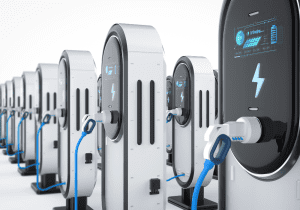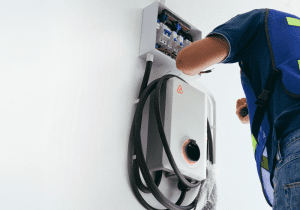As the world increasingly shifts towards sustainable living, electric vehicles (EVs) are rapidly gaining popularity. They offer numerous benefits, including reduced greenhouse gas emissions, lower fuel costs, and a quieter driving experience. However, owning an electric vehicle comes with its own set of logistical challenges, one of which is ensuring you have a reliable and efficient way to charge your vehicle at home. This is where home EV charging stations come into play. A home EV charging station not only provides convenience but also supports the entire eco-friendly lifestyle.
In this blog post, we’ll explore the top considerations for installing a home EV charging station, providing you with valuable insights and tips to make an informed decision.
The Basics of Home EV Charging Stations
Before diving into the intricacies of installation, it’s crucial to understand the basics of home EV charging stations.
 Different Types of Home Charging Stations
Different Types of Home Charging Stations
There are primarily two types of home EV charging stations:
- Level 1 Charging Stations: These use a standard 120-volt household outlet. While convenient, they are slower, taking up to 20 hours to fully charge a depleted battery.
- Level 2 Charging Stations: These require a 240-volt outlet, similar to what electric dryers use. They are significantly faster, capable of fully charging an EV in about 4 to 8 hours.
Cost Considerations and Potential Savings
The cost of installing a home EV charging station can vary depending on several factors, including the type of charger, installation complexity, and any necessary electrical upgrades. On average, you might expect to spend between $500 and $2,500. However, many EV owners find that the long-term savings on fuel and maintenance more than justify the initial investment.
Factors to Consider Before Installation
Installing a home EV charging station requires thoughtful planning. Here are key factors to consider:
Understanding Your Home’s Electrical Capacity
Before installing a Level 2 charging station, it’s essential to ensure your home’s electrical system can handle the additional load. This may involve upgrading your electrical panel or wiring, which should be performed by a qualified electrician.
The Ideal Location for the Charging Station
Location is crucial for both convenience and safety. Ideally, the charging station should be installed in a garage or an area close to where you park your vehicle. Additionally, consider the weather conditions if the charging station will be outdoors, and ensure it’s appropriately weatherproofed.
Convenience and Safety
When choosing a charger, consider features like:
- Smart Connectivity: Allows you to monitor charging and energy usage via a smartphone app.
- Adjustable Amperage: Provides flexibility depending on your home’s electrical capacity.
- Built-in Safety Features: Overload protection, ground fault protection, and weather resistance.
Steps to Install a Home EV Charging Station
Once you’ve chosen a charging station, the installation process begins:
 The Installation Process
The Installation Process
- Permits and Professional Advice: Check local regulations and obtain any necessary permits. Consulting with a professional electrician ensures the installation meets all safety standards.
- Hire a Qualified Electrician: A professional can assess your home’s electrical system and perform any necessary upgrades.
- Install the Charger: Follow the manufacturer’s installation instructions, ensuring it’s securely mounted and properly wired.
Tips for a Smooth Installation Experience
- Schedule installations during off-peak times to avoid disruptions.
- Ensure clear communication with your electrician regarding the project scope and any potential challenges.
- Test the charger with your vehicle to confirm it’s working correctly.
Maintenance and Future-Proofing
Maintaining your home EV charging station ensures longevity and efficiency.
Basic Maintenance Requirements
- Regular Inspections: Check cables and connections for wear and tear.
- Cleaning: Keep the charging unit clean and free from dust and debris.
- Firmware Updates: Update the charger’s software to the latest version for optimal performance and security.
Considering Future EV Models
As EV technology evolves, new models may have different charging requirements. Choose a charger that offers flexibility and compatibility with a range of vehicles to future-proof your investment.
Installing a home EV charging station is a significant step toward embracing a sustainable lifestyle. By considering factors such as your home’s electrical capacity, the ideal location, and selecting the right charger, you can ensure a smooth installation process and long-term benefits.
Ready to make the shift? Start by researching and planning your home EV charging station today. If you have any questions or experiences to share, feel free to join our community discussions and contribute to a greener future!
With the right preparation and informed decisions, you’ll soon enjoy the convenience and efficiency of charging your electric vehicle right at home, all while contributing to a more sustainable planet.

